This is a microscope that has a special design that is small and portable, hence the name ‘pocket’. They are pocket-size but some are a bit larger. Their size is too small to hold a mirror to place the image in its rightful position. However, they have a small stage where one can put an object to view. These microscopes are portable in such a way that they can be used by both amateurs and professionals depending on the function they want to perform.
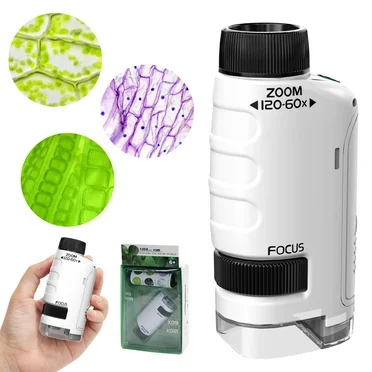
Principles:
Most of the pocket microscopes have an eyepiece on one end and a light at the other end with a small stage where an object can be placed for observation. Some of which lack the stage, the microscope is held over the object at the right angle for viewing. Some pocket microscopes view images in reverse when the design of the microscope has a mirror and lenses to magnify the image. However, some pocket microscopes are too small to hold a mirror, which can position the image in the right place.
Parts:
Light source (LED) – Some pocket microscopes have an inbuilt LED light source placed at the end of the microscope.
Eyepiece – It’s found at one end of the microscope for viewing the objects.
Stage – It is found on some of the pockets microscopes for holding the objects for viewing.
Mirror – It’s found on some pocket microscopes, for reflecting the image on the lens.
Batteries – some pocket microscopes need batteries to give power or energy.
Battery holder – Some pocket microscopes use batteries to work and this part is used to hold the batteries.
Digital camera – Some have a digital camera attached for taking photographs of the images produced.
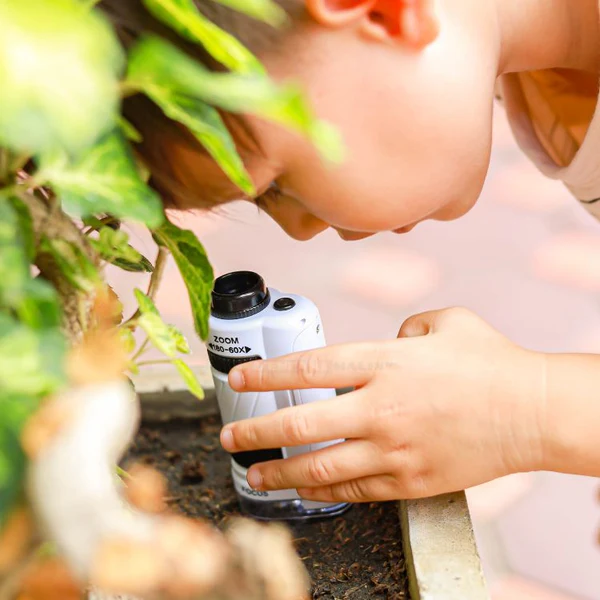
- LED pocket microscope with zoom function in magnification 60-120x. The microscope provides optimal results when placed absolutely horizontally directly on the object to be examined
- LED lighting with an aspherical ground lens system ensures crystal clear and distortion-free images. The ideal instrument for all curious children, inquisitive students, hobby researchers and professionals.
- Compact design, light-weight – you can easily take the pocket microscope anywhere. The perfect tool for the detailed examination of flowers and plants, stamps and coins, fine textile structures, insects and other natural phenomena, reading small print, checking electronic circuits, and many other interesting objects
- Eye distance: 8.1 mm – 9.7 mm, weight: 54 g
Uses:
They are size friendly, which makes them easy to use especially for children.
Their size also favors them to be used for educational purposes for children.
Used for inspection jewelry.
Used to inspect circuit boards.
Used for photographic inspection.
Used in watchmaking.
Used in dentistry.
Used to study insects (Entomological studies)
Advantages:
Portable optical microscopes are lightweight, easy to use, and allow real-time observation outside the lab, making them ideal for fieldwork and education. They’re cost-effective, versatile, often battery-powered, and some models include digital features for easy image sharing and many more advantages.
My Observations Under this Microscope:
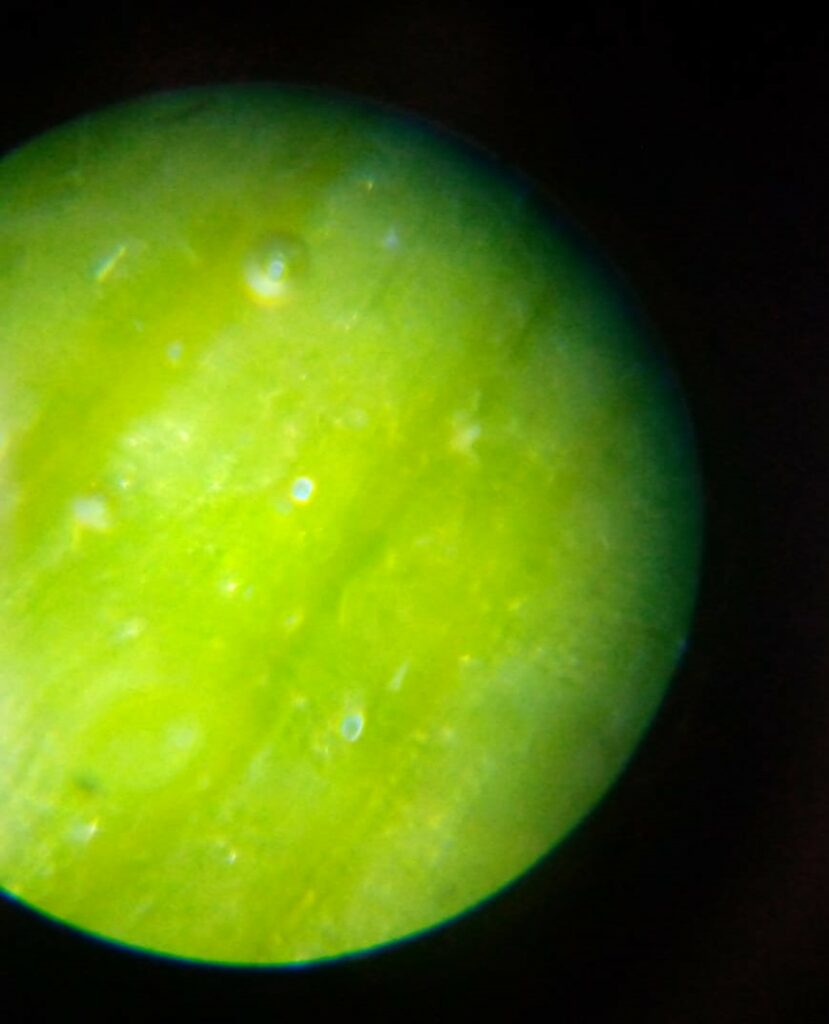
Alo Vera Gel.
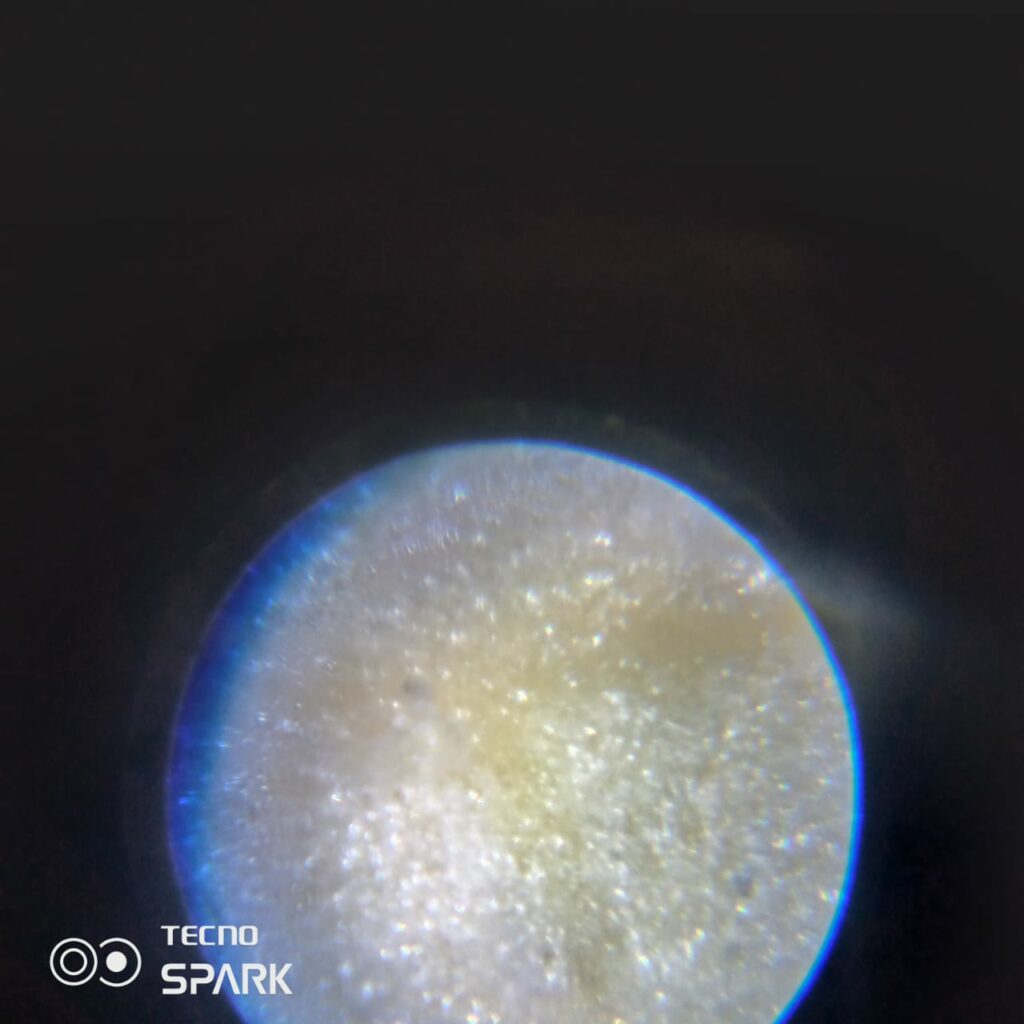
Banana Crust.
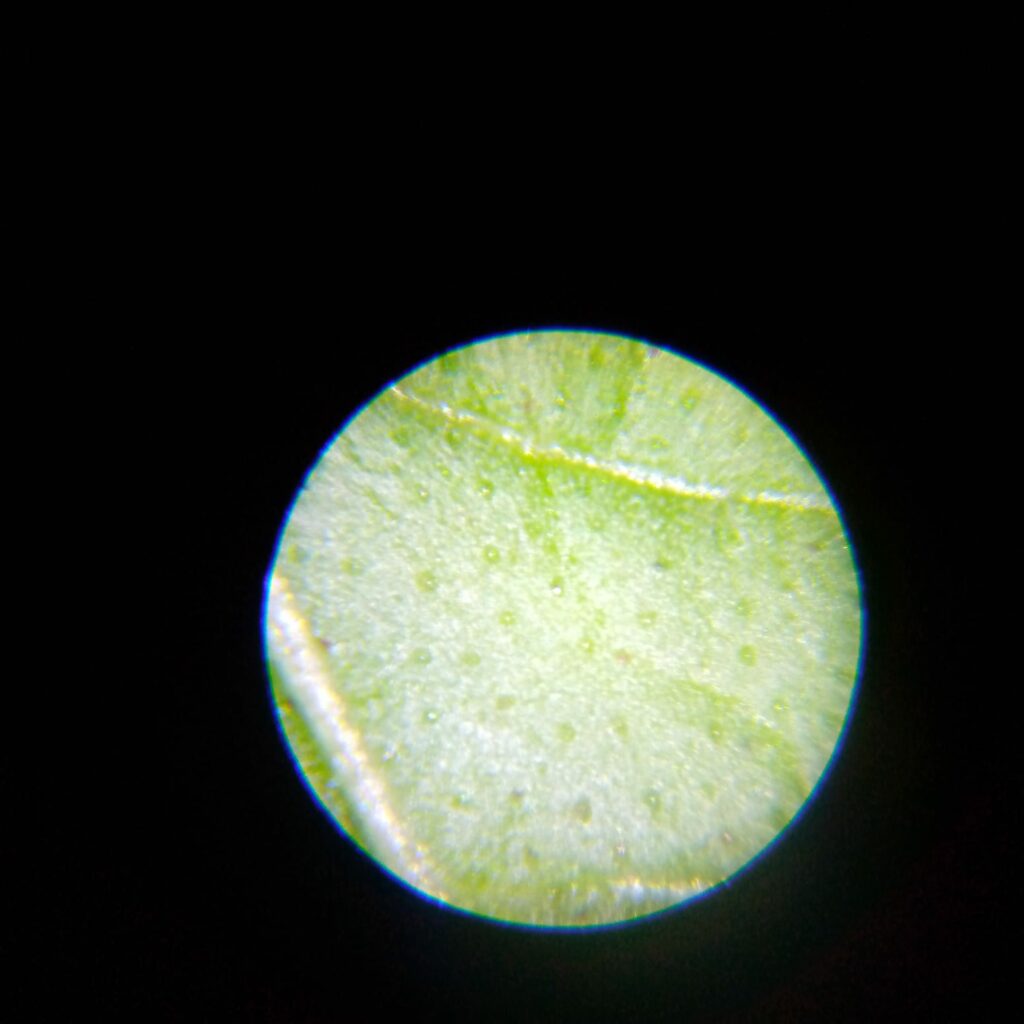
Internal part of mint leave .
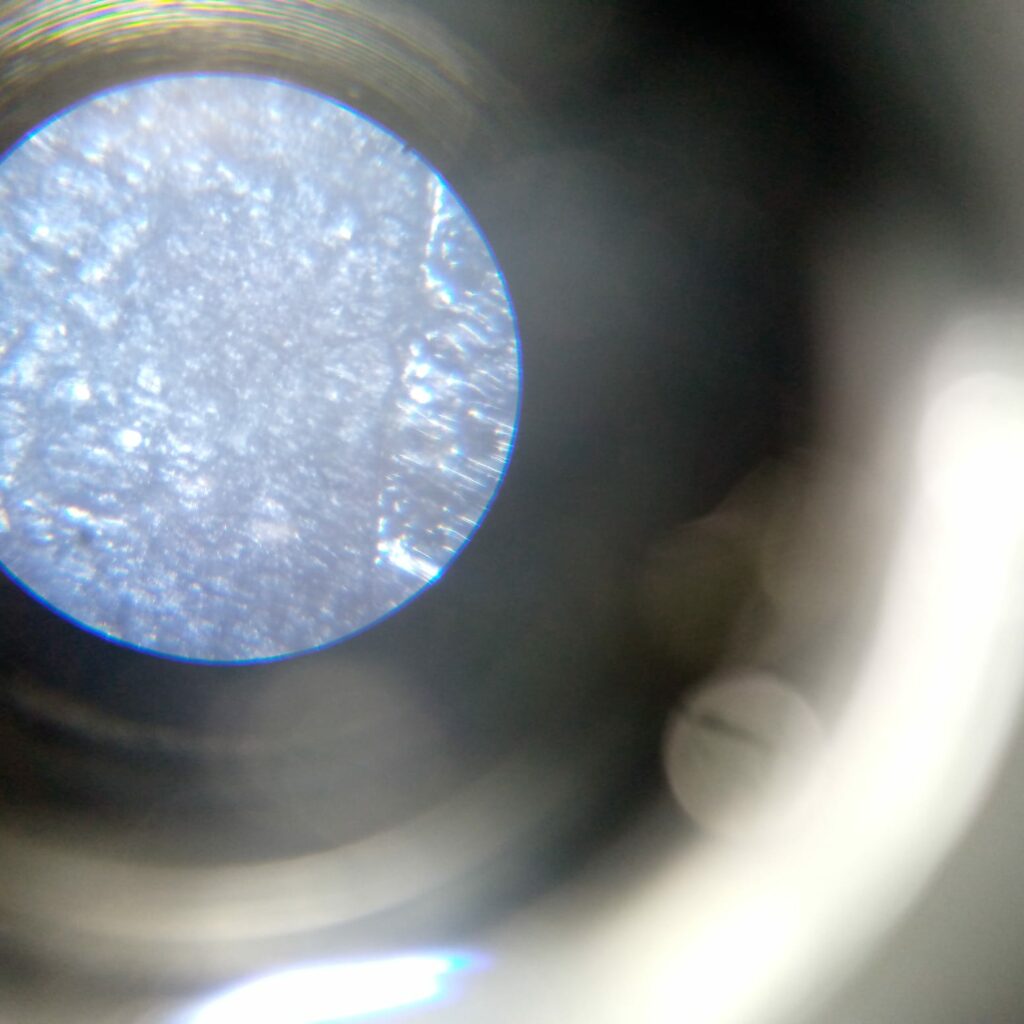
Hard outer part of Onion.
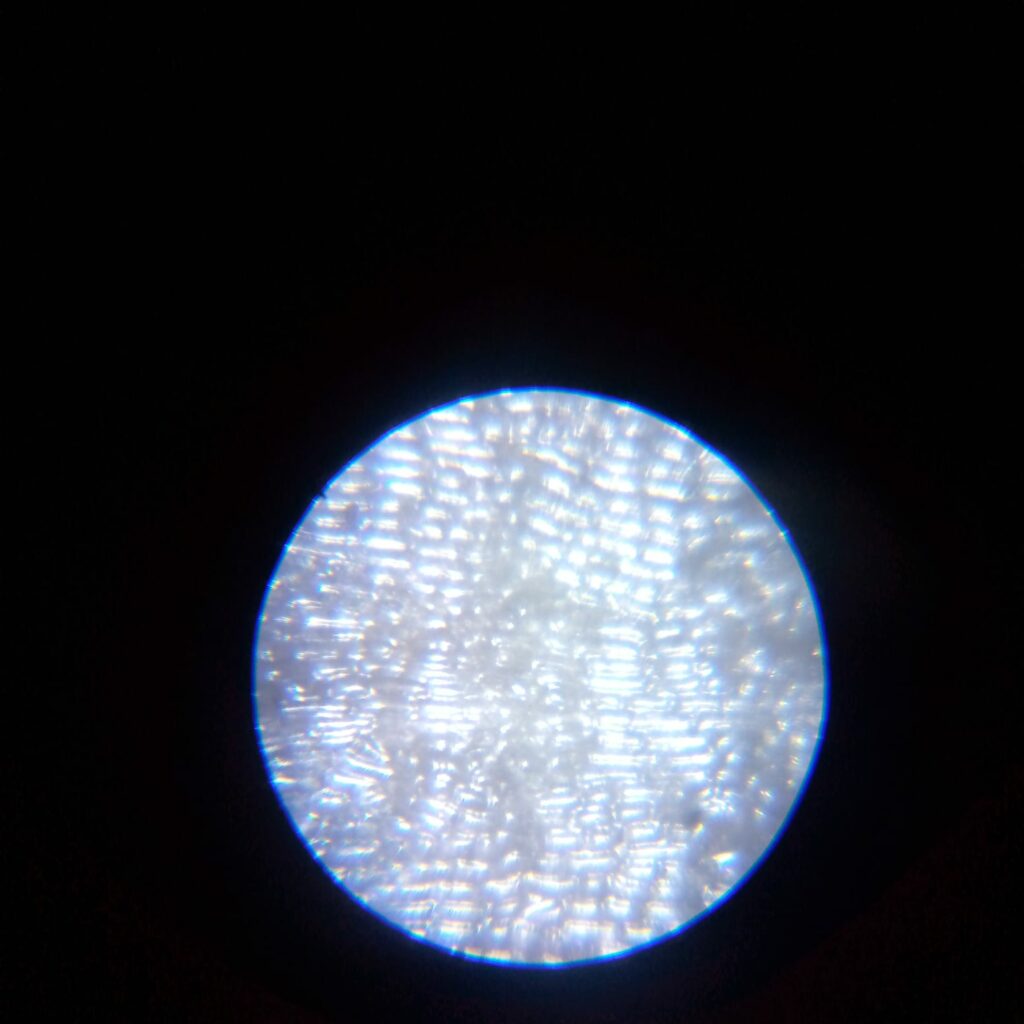
Thin layer of Onion.
So, these are the few observations that I saw through a pocket microscope. Now, I want to see many more intriguing things to explore under a portable microscope:
Fish Scales: Observe the overlapping pattern and tiny grooves of fish scales.
Bees’ Pollen Baskets: Examine how pollen clings to bees’ legs and the intricate structure of the pollen basket.
Butterfly Wings: Look closely at the tiny scales that give wings their color and texture.
Blood Cells: See the shapes of red and white blood cells.
Pollen Grains: Study the unique structures and shapes of pollen.
Salt Crystals: Look at crystal shapes and observe how they differ from other minerals.
Tiny Microorganisms: Identify small protists or algae in pond water samples.
Soil Particles: Analyze organic matter, minerals, and tiny organisms in soil.
Fungi Spores: Study the unique shapes and arrangements of spores from mushrooms or molds.
Plant Cells: Examine leaf structures, chloroplasts, and cell walls.

This microscope is very beneficent for students …. you can analysis of anything on anywhere and explore new things and gain some knowledge.